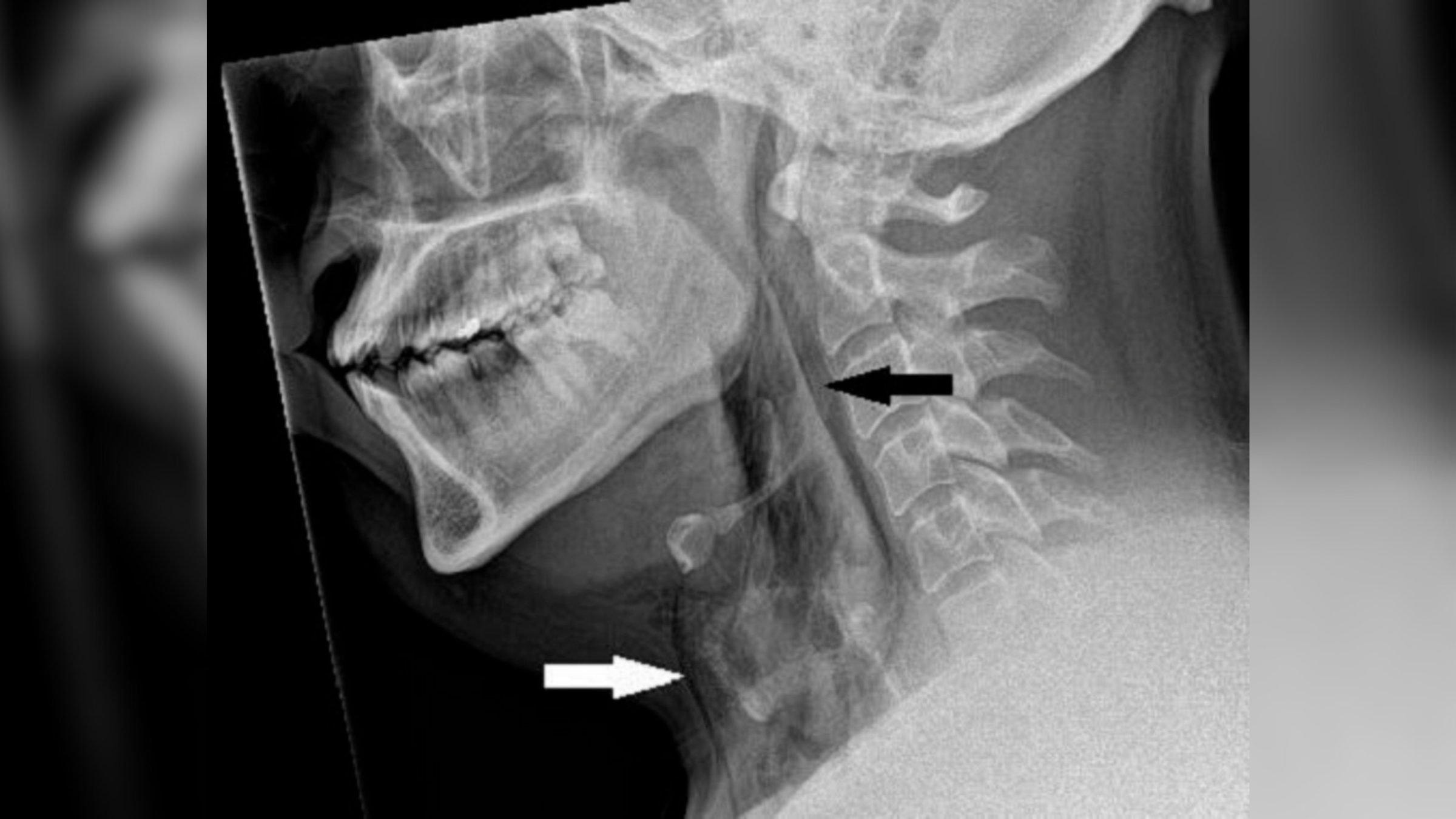The patient: A man in his 30s in the U.K.
The symptoms: The patient arrived at the emergency department in severe pain and with a swollen neck that he struggled to move. He reported that the pain had erupted immediately after he’d stifled a sneeze by pinching his nose and closing his mouth at the same time. He was driving and contending with hay fever symptoms when he stifled the sneeze.
Although the man didn’t have any trouble breathing, swallowing or talking, his doctors noticed a faint crackling sound during an initial examination of his neck.
What happened next: When the doctors took an X-ray to investigate further, they found signs of surgical emphysema, a condition in which air gets trapped under the deepest tissue layers below the skin.
The diagnosis: A CT scan then showed that a tear had formed between the third and fourth bones in the patient’s neck, which enabled air to escape from his windpipe, or trachea, and into tissues of the neck and the space between the lungs. The hole in his trachea measured 0.08 by 0.08 inches (2 by 2 millimeters).
The doctors concluded that the tear likely formed due to a “rapid build-up of pressure in the trachea while sneezing with a pinched nose and closed mouth,” according to a report of the case.
The treatment: The patient’s medical providers determined that he didn’t need surgery to repair the tear. Instead, they monitored him in the hospital for two days, carefully watching his oxygen levels and other vital signs and not providing food by mouth for the first day. He was then discharged with prescriptions for pain-relief and hay fever medications, as well as doctor’s orders to avoid strenuous activity for two weeks.
At a checkup five weeks later, a CT scan of the man’s neck showed that the tear had completely healed.
What makes the case unique: Spontaneous windpipe tears aren’t widely reported in the medical literature, with only a few cases documented prior to this case. Those tears resulted primarily from physical trauma to the windpipe or from complications following medical procedures, such as thyroid removal or the insertion of a tube into the windpipe or esophagus.
Prior to the man’s case, there had been no reports of a trachea tearing due to stifled sneezing, his doctors reported. Estimates suggest that, when the mouth and nose are closed during a sneeze, the pressure in the upper airways may be more than 20 times the pressure during your average “achoo.”
“Everyone should be advised not to stifle sneezes by pinching the nose while keeping the mouth closed as it can result in tracheal perforation,” the doctors cautioned in their report.
This article is for informational purposes only and is not meant to offer medical advice.
